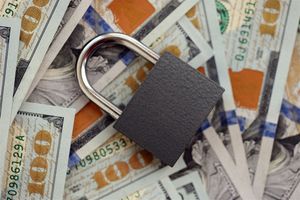
The tourism industry is coming back strong after the pandemic.
Across Europe, the cultural and relaxation centers are booming. Spain is the greatest beneficiary of the boom with a 25% tourism burst in 2024. Italy is right on their heels with a 20% rise. China, Japan, Germany, Oman and the United Arab Emirates have new Marriott MAR hotels on the way. In Vietnam, Sheraton and Hyatt are opening new locations.
While hotel companies are on the move across Western Europe, Russia lags. The top three countries for travelers to Russia are Kazakhstan, Tajikistan and Uzbekistan. The missing element is the wealthier, more sophisticated travelers from the U.S. and Western Europe. The pizzazz is missing.
Here is some free advice for Russia to build up its travel prowess: A tour showing where the Czar Nicholas II and his family were killed and another to show where and how they lived. Politically unlikely, but it would draw a huge number of tourists!
Consider Siberia – only one of many potential tourist destinations. Very few tourists want to see every part of Siberia’s 57 million square miles. A well-designed tour would pick a few of the most attractive and unusual spots and arrange pleasant transportation and lodging. Here are two suggestions:
- Tundra, icebergs: A visit to a location where people could see – even in a museum setting – these fascinating elements of nature from above the Arctic Circle (a good point to make in tourist brochures).
- Lake Baikal: Tourists like to see and feel the beauty of nature, especially when there is a clear distinction: The world’s deepest lake.
As things stand, you have to essentially make up your own tour to enjoy what Russia has to offer. Without a coordinated effort to make tourism attractive and please every need of tourists – including good food, clean train travel, well-managed hotels – tourism will lag.
Operating in a free-market environment
Russian management strikes again. Now that Russia must operate in a free-market environment, it needs to produce products of merit that attract buyers outside of Russia. They have had a tough time creating manufactured products of even moderate quality. In Russia, the top automobile brand remains Lada, the long-standing Fiat knock-off. However, its number one position takes some explaining. Partly owned by Renault, Lada uses many “crossovers,” which means Renault features added to these “Russian” cars.
In addition, many western manufacturers departed when the sanctions were imposed on Russia. On top of that, Chinese–made cars have expanded steadily in Russia, which spans imports of automobiles from China and Chinese vehicles manufactured in Russia. Russia continues to rely on its natural resources for national earnings. Its massive supply of oil and gas have been hogtied by the U.S. and the G7 as discussed in previous entries. But one other natural resource deserves comment.
Caviar anyone?
Always considered an impossible luxury for the ordinary person, the “caviar market,” such as it is, follows a topsy-turvy course. Older people, those who remember a time when inflation was low, are likely to respond, “Caviar? Yes, those expensive Russian fish eggs!”
Talk about being out of date! Russia has slipped mightily from the cat-bird seat of caviar production. They are now way behind China, Japan, Italy and others. Tiny Iceland produces almost as much caviar as massive Russia. Planning a fancy cocktail party? Wealthy New Yorkers may frequent Zabar’s, the premier food purveyor on the Upper West side. But the Russian element in caviar is no longer a big seller. Now, it is simply called Zabar’s Caviar. Russia’s current level of planning may be worse than the old five-year plans.






